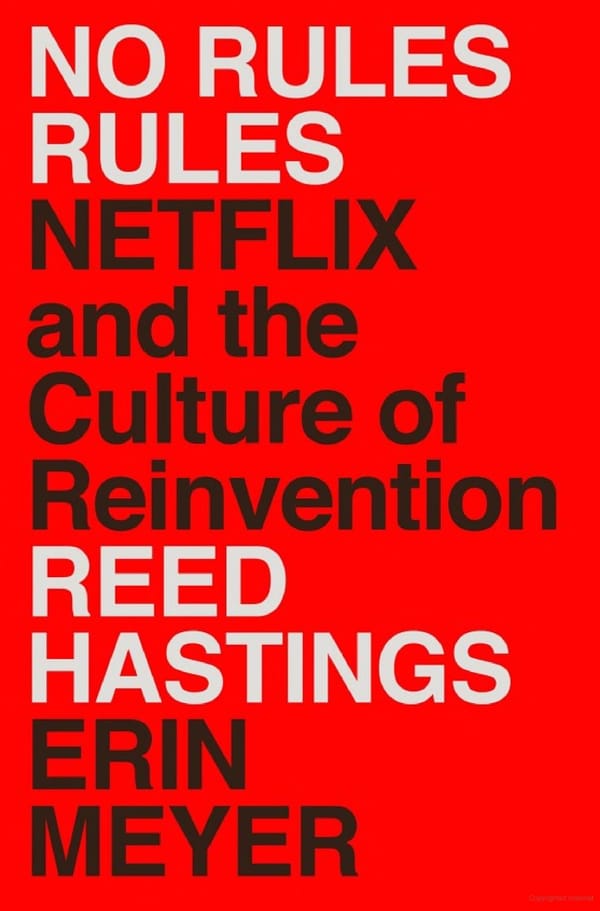Book Review: Scaling People
Claire Hughes Johnson of Stripe and Google gives us a deeply detailed guide to management.

The Economist calls Scaling People “unapologetically practical in its focus.” Claire Hughes Johnson was an executive at Google before joining Stripe as COO, where she scaled it from 160 to more than 7000 people.
This book is long on practicality and should be thought of as a reference manual for scaling organizations and running teams well. In Johnson’s words:
There’s a Pablo Picasso quote we like to repeat at Stripe: “When art critics get together, they talk about Form and Structure and Meaning. When painters get together, they talk about where you can buy cheap turpentine.” Sometimes you want to read a book about Picasso’s life, and sometimes you just want to know where to buy the cheapest turpentine. Consider this the latter: an insider’s guide to management turpentine.
The first lesson is that those who outperform in their fields find a way to keep improving. They operate at an uncomfortable pace. Johnson did exactly this, and shares her lessons in this book.
Johnson is a fan of what she refers to as the company’s OS (operating system) – the set of frameworks by which things happen at a company. They are indications of priority and how things get done, and they should apply in four major areas:
- Foundations and planning for goals and resources
- Hiring
- Team development
- Feedback and performance
In order to do any of those at a high level, you need to discover your ownoperating principles. Johnson’s are:
- Build self-awareness to build mutual awareness
- Say the thing you think you cannot say
- Distinguish between management and leadership
- Come back to your operating system
Scaling People contains practical check-lists throughout to really help you understand (and act on) many of these ideas. For example, the Management Prerequisites Checklist contains 16 items such as “you and your reports: hold bidirectional feedback sessions… every 3-to-6 months.” At the end of the first chapter is a very helpful Understand Your Values exercise with 6 distinct steps, a sample table and a sample rubric to help you complete this exercise. It’s worth devoting some time to these.
An effective manager and leader needs to build trust. Building self-awareness is the first step. We all have blindspots, shaped by our past. How we see ourselves is not likely to be how others see us. This may be something that comes naturally to you, but it also may not. Self-awareness includes knowing your work preferences, knowing when you do your best work, a deep understanding of your strengths and weaknesses (and when your strengths are weaknesses).
Are you self-aware? Here are some signs you may not be:
- You get feedback you disagree with – I’m a fan of the idea that all feedback is valid, even if it’s not correct
- You are frustrated because you disagree with your team’s direction or decisions and it feels like you are unable to convey why
- You’re drained by work or have trouble describing what kind of work you enjoy
- You have friction with your manager and have trouble resolving it
Say the things you think you cannot say: are you holding back? Why? It is a very hard skill to master, but the best teams do not suppress thoughts. That said, communicating gracefully is important. Bad: that presentation was terrible. Better: that presentation had aspects that came up short–what are your thoughts? Feedback should be a joint exploration and less of a judgment.
Done well, this will build trust in the workplace. A set of foundational planning documents also builds trust. It helps people understand how they’re expected to work together. For example, how are goals set? How seriously are they taken? Do people have a clear understanding of all of those together?
Chapter 2 of the book, about the foundations, discusses the phases a company goes through as it starts to grow–from reactive product-market-fit to future investments. On the engineering side, this goes from “phase I” (the scrappy 2-pizza developer team with tech debt and fast iterations) to “phase II” (attempting to decouple elements of the code base for developer velocity) to “phase III” (full platformization). The deeper lesson is that it’s very hard to get this precisely right and what’s optimal may be different each time you look. Add to this that any change itself is hard.
For resource allocation, clear expectations are important. As a company grows, people will often focus on their area and miss more holistic areas of importance. Similarly, it’s the responsibility of the leadership team to invest in critical work to mitigate existential risks to the company. There’s a great side-bar on setting good goals, and how this task is also not easy but a core part of running a company well (outcomes, not actions; parsimonious; etc). It’s important to also say what % of goals you expect to hit. Facebook famously had a target of 50%, and questions would follow if every goal was hit. Google has a target of 70%. Relatedly, all teams should have some metrics. For all of these goals, you do want clear ownership and accountability.
A note about processes – they have a bad reputation now. Some things to mitigate the cost of process overrun: 1) watch out for defensive processes 2) find a way to sunset stale processes 3) allow for experimentation and don’t let them become too rigid.
There are equivalently detailed chapters on hiring, team building and feedback. By now you should have a sense of how detailed and dense this book is! I’ll spare you the same level of summary for the remaining chapters except to note that you can expect this level of rigor, thought, and explicit direction in just about every aspect of company building. For example, questions like “What is the founder’s role in hiring?” or how to avoid the “experience trap” when hiring senior candidates. The detail is to the level of how to conduct a reference call (you absolutely should!), sample job levels, feedback templates, etc.
There’s a special section on managing high performers (pushers and pullers) which is worth extra attention for any manager as high performers drive disproportionate impact. Do not make the mistake of not challenging them sufficiently.
The last part of the book is simply titled “You.” It’s about how to do your best work. How do you manage your time and energy? When do you bring your best to a problem and when is it the opposite? You’ll need to set boundaries to protect that time. Prioritize the important and urgent work. Find a way to work well withyourmanager. To chart your own career, Johnson recommends a document where you answer questions like the following:
- Were you good at it? How do you know that? If you weren’t good at it, why not?
- Did you enjoy it? Why or why not?
- What did it reveal about the type of work you do or don’t want to do?
- Where did you have clear gaps in abilities?
- What skills did you need to acquire? Was that easy or hard to do?
- Were you interested in the work? Did you want to keep going and learn more?
In summary this book is something like a textbook. There’s no way to absorb all of the lessons in one go. Some of them may not apply to your situation, but you’re almost always better off considering the perspective outlined in this book. There’s much to be learned from the perspective of someone who has scaled two very successful organizations.



